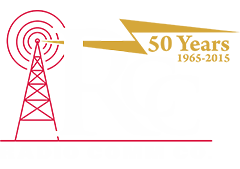Technology Platform
Technology Platform
Flexible. Scalable. Cost-Effective.
Leveraging a Time Division Multiple Access (TDMA) platform, MOTOTRBO reduces overall equipment costs while supporting more users and more information in the same area and frequency. The performance and flexibility of TDMA make it the only serious choice for professional two-way digital radio.
- Increased spectral efficiency in existing 12.5kHz channels.
TDMA enables 6.25 kHz equivalent efficiency in licensed 12.5 kHz repeater channels. This doubles per-channel capacity, while satisfying future regulatory requirements for 6.25 kHz equivalent efficiency. And unlike 6.25 kHz transmission methods built on Frequency-Division Multiple Access (FDMA) technology, TDMA fits seamlessly into existing licensed channel structures in UHF and VHF—increasing performance, eliminating the need for rebanding or re-licensing, and reducing the risk of new forms of radio channel interference. - Lower equipment costs.
With TDMA, one repeater can do the work of two analog repeaters—lowering acquisition and operating costs. TDMA allows you to achieve 6.25 kHz equivalent efficiency while minimizing investments in repeaters and combining equipment. Unlike analog or FDMA technology that requires a dedicated repeater for each channel plus expensive combining equipment, two-slot TDMA achieves two-channel equivalency using single-channel equipment. - Advanced features and flexibility.
At the repeater, the second slot in a TDMA technology platform can be used to deliver advanced features—such as IP-based dispatch data enhanced signaling—in parallel with a call on the other slot. - Increased battery life.
TDMA delivers up to a 40 percent improvement in battery life compared with analog radios, because any given radio is transmitting only during every other slot. Effectively, this means the radio is only transmitting approximately half of the time. - Standards-based.
TDMA is the globally-recognized European Telecommunications Standards Institute (ETSI) Digital Mobile Radio (DMR) tier two standard for professional mobile radio. TDMA also meets existing United States regulatory requirements for 12.5 kHz efficiency in both analog and digital mode.
Two-slot 12.5 kHz TDMA-based systems, providing 6.25 kHz equivalency, is the right choice for most mobile professionals. Professional radio standards based on TDMA technology are already widely used around the world, and future requirements for even greater spectral efficiency are almost certain to be based on TDMA as well. Today and tomorrow, TDMA technology provides advantages of feature flexibility, lower equipment costs, longer battery life, future-readiness and the proven ability to increase spectral efficiency without risking increased congestion or radio channel interference.
TDMA: How It Works
Like FDMA, or "Frequency-Division Multiple Access," TDMA is a technology that allows multiple conversations to share the same radio channel. Although the goal is the same, the two technologies work very differently.
6.25 kHz FDMA
In FDMA, a channel frequency is split into smaller subdivisions — for example, splitting a 25 kHz band into two narrower "sub-channels" that transmit side-by-side to achieve 12.5 kHz equivalent spectral efficiency. The same technique can be used to achieve 6.25 kHz equivalent efficiency in a 12.5 kHz channel — although how well this technique will perform hasn't yet been established in real-world implementations on a large scale. As the subdivisions of a licensed channel become narrower, there's a growing likelihood of problems due to congestion and interference in an FDMA-based 6.25 kHz-equivalent system.
When you try to squeeze two 6.25 kHz signals into one 12.5 kHz channel, you still have to meet the channel's regulatory emissions mask. In order to do so, the signal deviation must necessarily be smaller than what can be achieved with a single 12.5 kHz signal. This smaller deviation means reduced sensitivity, which in turn reduces effective signal range in real world conditions. At the same time, there is very little tolerance for errors introduced by oscillator aging, and the 6.25 kHz signal contains more energy near the edges of the mask — making it more prone to adjacent channel interference and near/far interference problems. This results in reduced quality of service in real world conditions.
Two-slot TDMA
By comparison, TDMA offers a proven method for achieving 6.25 kHz equivalency in 12.5 kHz repeater channels — a major benefit for users of increasingly crowded licensed bands. Instead of dividing the channel into two smaller slices, TDMA uses the full channel width, dividing it into two alternating time slots. As a result, TDMA essentially doubles repeater capacity while preserving the well-known RF performance characteristics of the 12.5 kHz signal.
From the perspective of RF physics — that is, actual transmitted power and radiated emissions — the 12.5 kHz signal of two-slot TDMA occupies the channel, propagates, and performs essentially the same as today's 12.5 kHz analog signals. with the added advantages of digital technology, TDMA-based radios can work within a single repeater channel to provide roughly twice the capacity of analog while offering RF performance equivalent to, or better than, today's analog radio.
The clear advantages of digital radio - along with increasing regulatory pressures to use RF spectrum more efficiently - will drive widespread adoption of professional two-way digital radio solutions in the coming years. If you're using analog today, you'll almost certainly be migrating to digital tomorrow. Now is the time to research the available technologies so that, when you're ready to make the move, you'll choose systems that provide the greatest benefit over the long term.
Multiple Access and Spectral Efficiency
The primary goal of any multiple-access RF technology is to achieve greater spectral efficiency, allowing more users to share a given channel in the licensed RF spectrum. Historically, the licensed airwaves were divided into relatively large 25 kHz channels. There was plenty of room for the broadcasters using these channels to exist side-by-side, without significant interference problems. Over the years, however, the airwaves have become increasingly crowded, creating a need for new standards and technologies that allow more radio users to share the available spectrum in any given area.
The demand for greater spectral efficiency is being driven, in part, by regulatory agencies. In the U.S., for example, the FCC is requiring manufacturers to offer only devices that operate within 12.5 kHz VHF and UHF channels by 2011. By the year 2013, all VHF and UHF users will be required to operate in 12.5 kHz - making it possible for roughly twice as many users to share the airwaves as compared with today's 25 kHz licenses.
The next logical step is to further improve the effective capacity of 12.5 kHz channels. While there's no current mandate requiring a move to 6.25 kHz, discussions are continuing at the FCC and other agencies, and it's only a matter of time before the ability to carry two voice paths in a single12.5 kHz channel, also known as 6.25 kHz equivalent efficiency, becomes a requirement in VHF and UHF bands. In the meantime, two-slot TDMA offers a way to divide a 12.5 kHz channel into two independent time slots, achieving 6.25 kHz-equivalent efficiency today.
With two-slot TDMA-based devices, there's no reason to wait for a government mandate to achieve more capacity on existing licensed channels. Business can take the initiative to achieve greater spectral efficiency well ahead of the inevitable regulations - and ahead of the competition. And even without a regulatory mandate, greater spectral efficiency offers many operational benefits.



